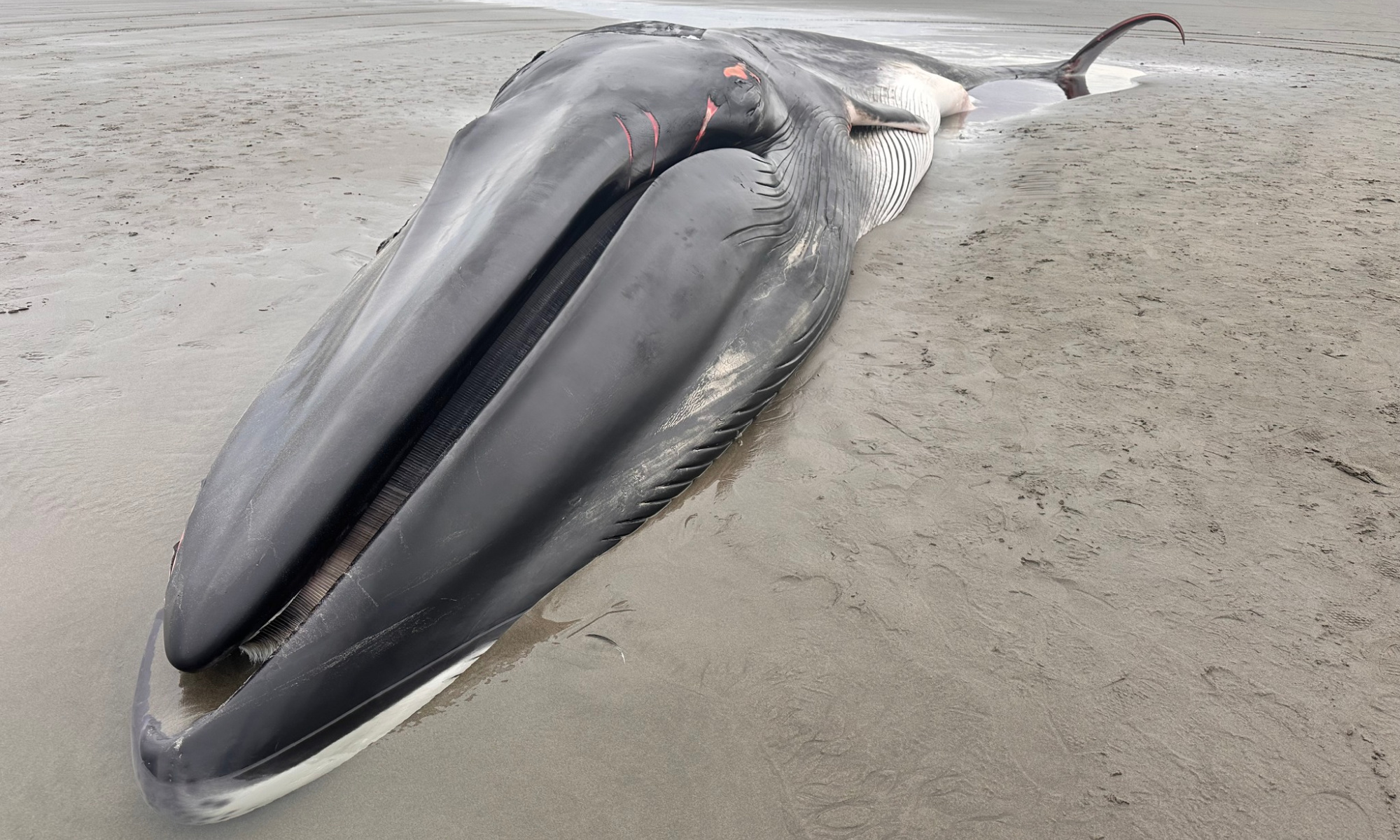The whale was also underweight and wrapped in fishing gear, but necropsy results are pending and the cause of death remains unknown
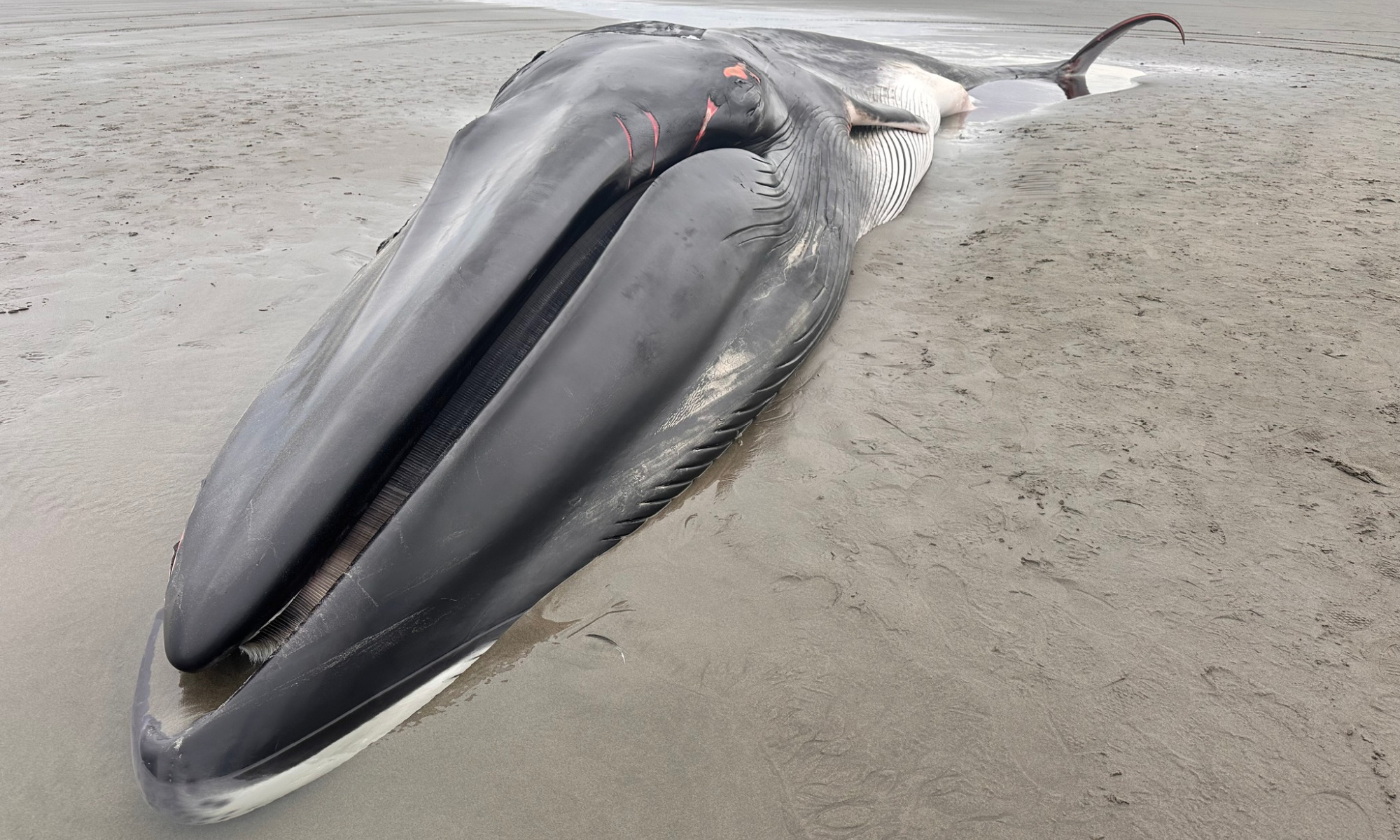
The Fin whale washed back out to sea and resurfaced again on Feb. 15 3 miles north of Sunset Beach. Photograph by Seaside Aquarium
Beachgoers in the coastal Oregon town of Sunset Beach came across a surprising scene on the morning of Feb. 12: a young, 46-foot-long endangered fin whale stranded on the shore. The whale was tangled in “fishing gear” and appeared to have been bitten by orcas, according to some of the people who found and photographed it.

The fin whale was already dead when it washed up on the beach with its mouth open and baleen exposed. The moving tide made the whale appear to still be alive, Seaside Aquarium says in a Facebook post about the situation. This might have prompted passersby to untangle the whale, which ended up doing more harm than good.
“Unfortunately, before authorized responders had a chance to examine the whale, someone removed the entangling gear,” the post reads. “While it may have seemed like a good idea at the time, this compromised the stranding and entanglement investigation.”
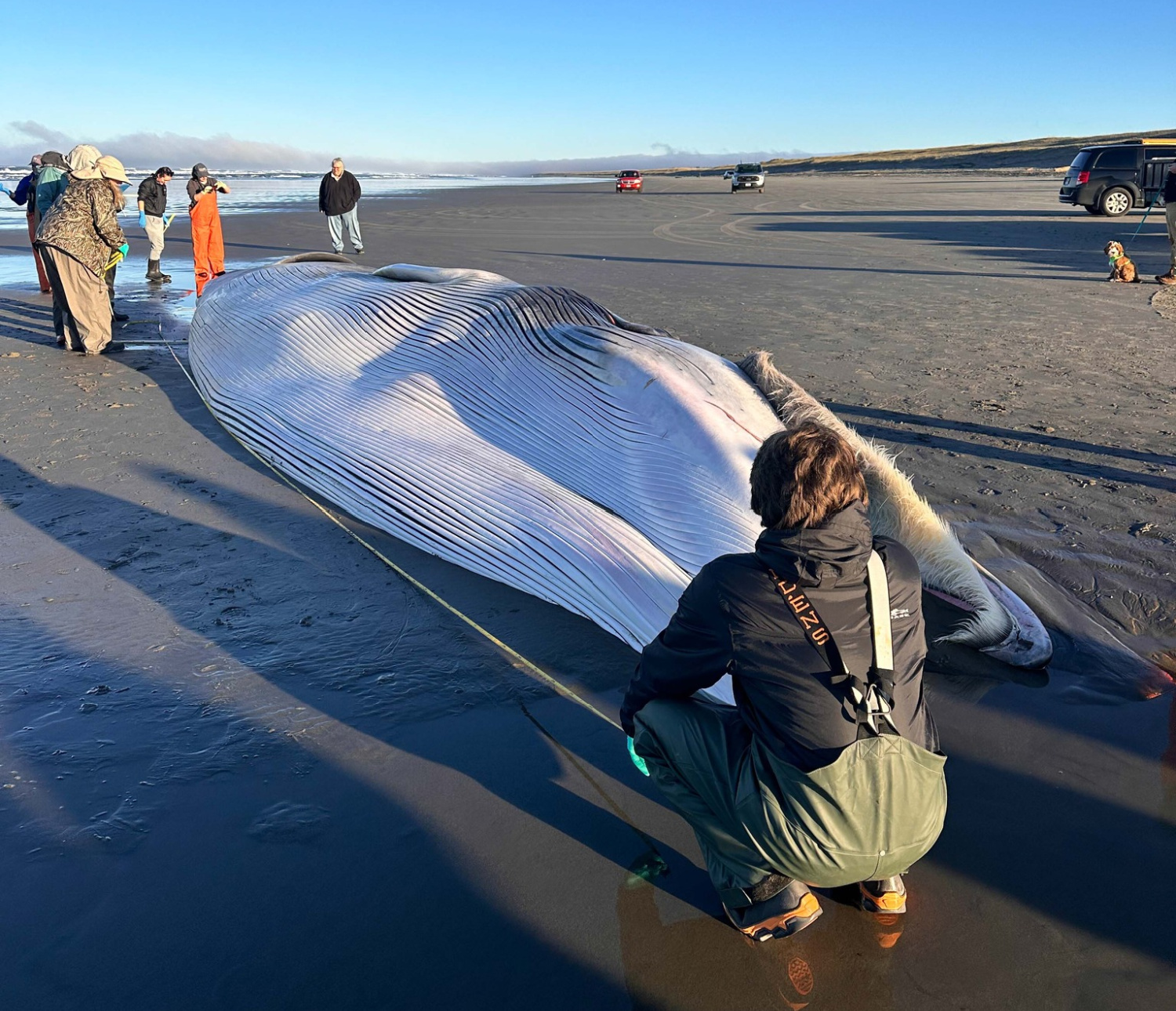
The whale was underweight, and it showed signs of a recent interaction with orcas. Fresh “rake marks,” or long, equally-spaced scrapes that look like the work of a garden rake, gouged the whale in multiple places. These wounds are a telltale sign that one or multiple orcas had behaved aggressively toward the whale recently.
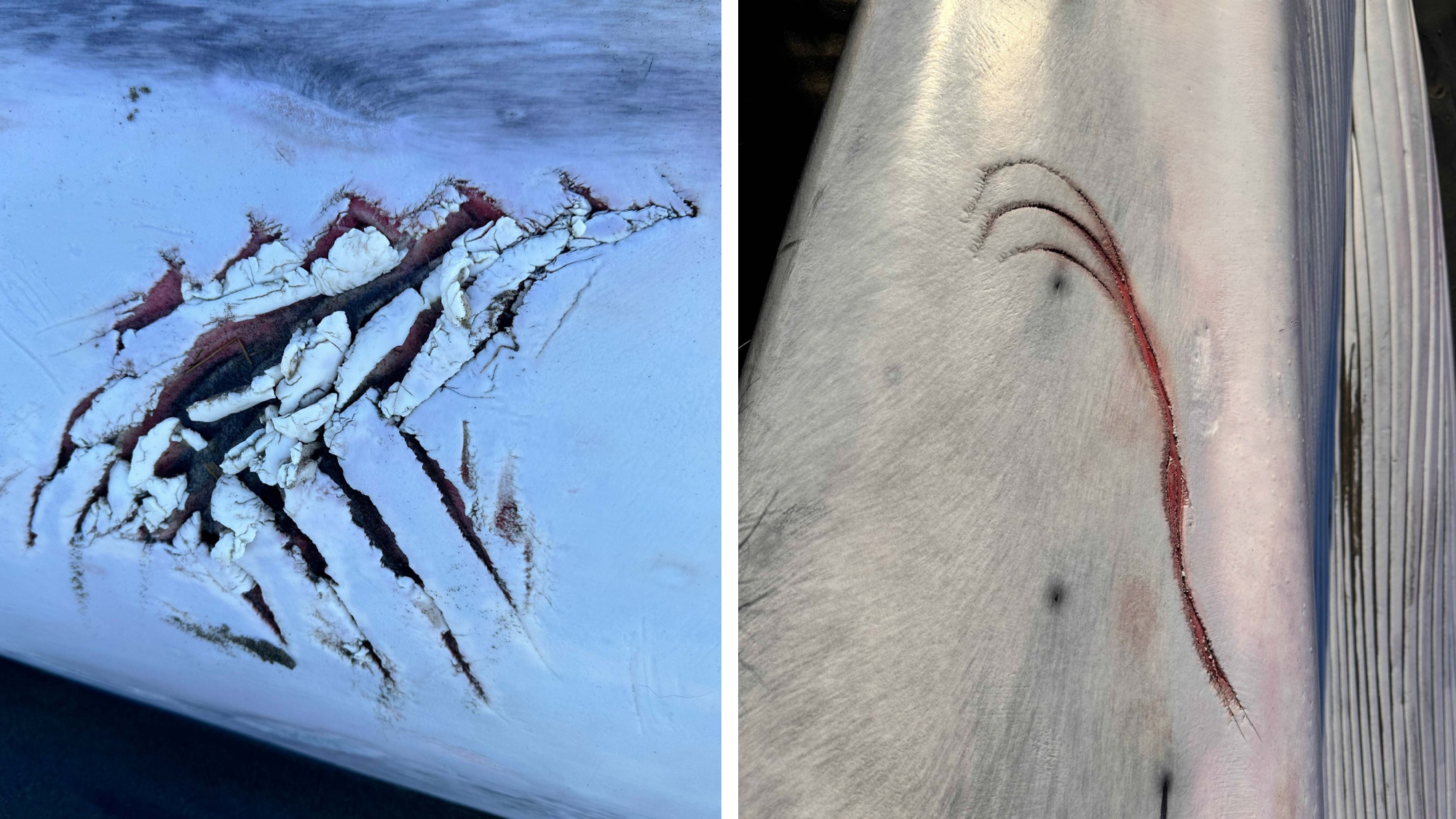
The fin whale underwent a necropsy on Feb. 13 and results were pending at the time of the aquarium’s post. Neither the bite marks nor the entanglement in fishing gear seemed serious enough to kill the whale, the Washington Post reports, so the official cause of death remains a mystery. It’s not immediately clear what type of “fishing gear” was wrapped around the whale, and whether it was a commercial net or other piece of tackle. The whale’s eye was still intact, even though the eyes are usually one of the first body parts to get picked apart by scavengers.
On the night of Feb. 15, the tide carried the whale back off the shore and 3 miles north of Sunset Beach to a different spot, a different Facebook post from Seaside Aquarium reads.
“While this is an incredible experience to see the second largest whale on earth we’d like to remind you to keep your distance from the whale, marine mammals can carry diseases that can be transmitted to humans and our pets,” the post says. “This is also an endangered species, parts from the whale cannot be legally collected and registered by members of the public.”
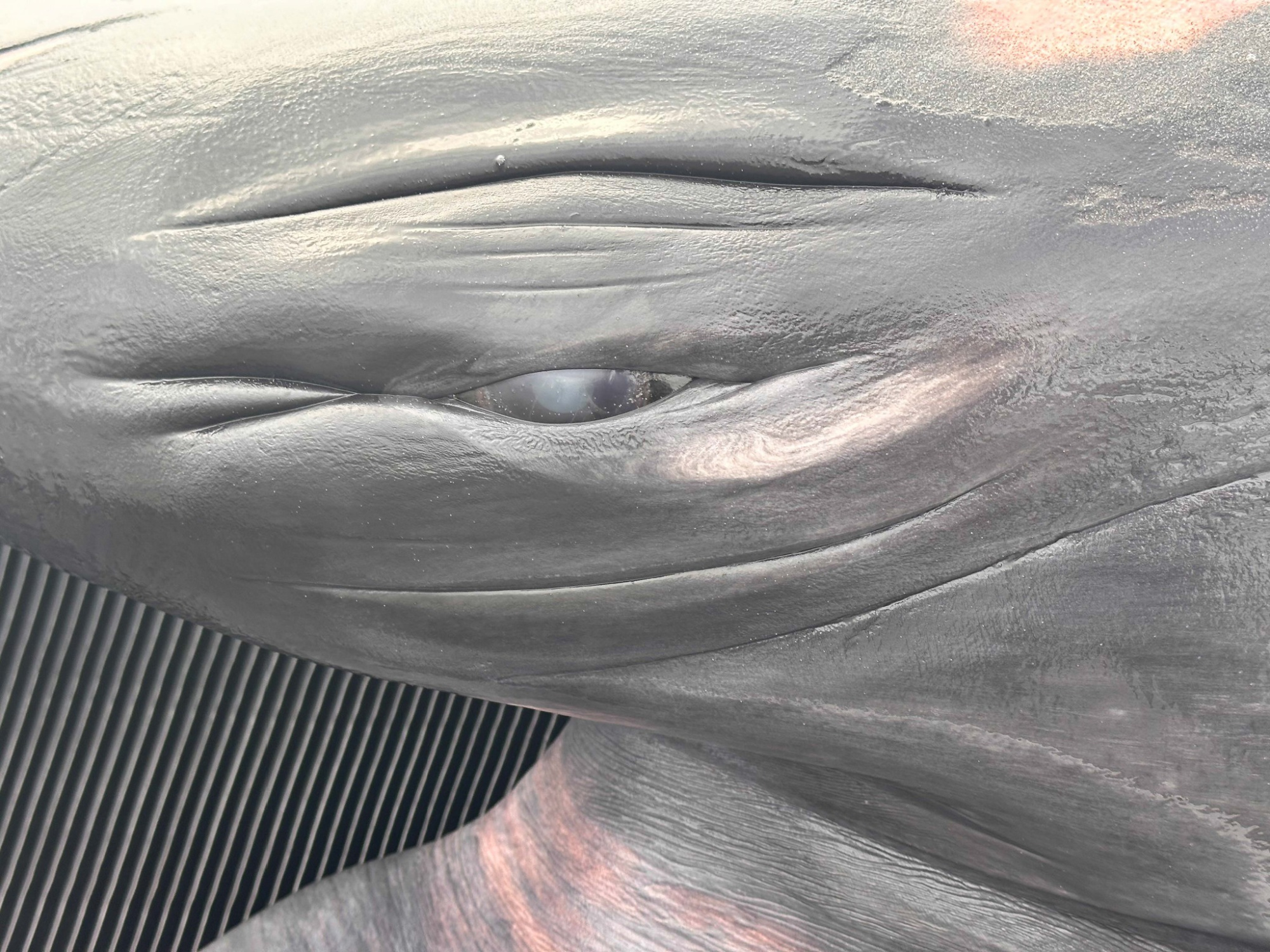
Read Next: Killer Whales Are Teaching Each Other to Sink Boats
Fin whales are the second largest whale species on Earth. They can grow to be 85 feet long and weigh 80 tons, or more than a fully-equipped modern military tank. They are protected under the Endangered Species Act and Marine Mammal Protection Act. The National Oceanic and Atmospheric Association’s latest population estimate put the Washington/Oregon/California population at roughly 7,900 whales.
Read the full article here

